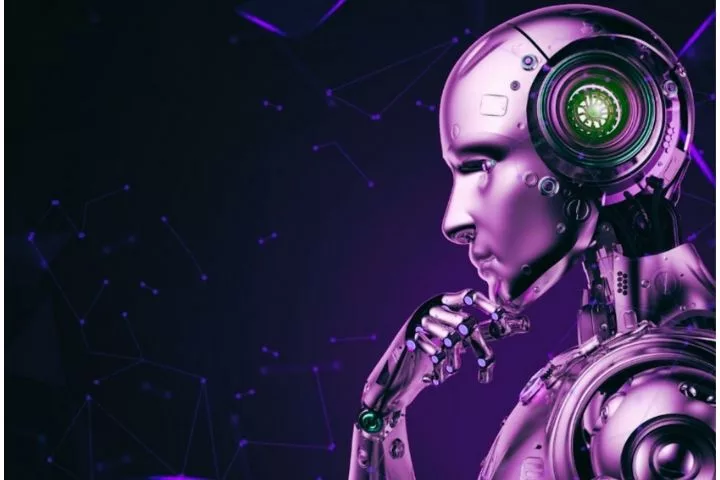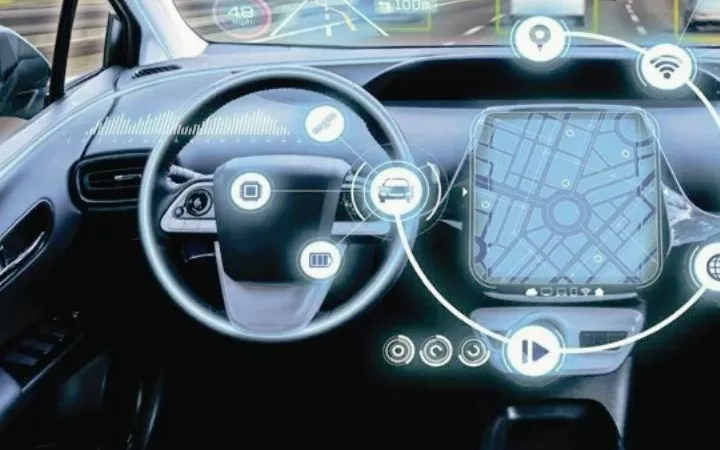There Is No Such Thing As One Artificial Intelligence(AI)

Artificial intelligence (AI) dominates many discussions on a scientific, economic, social, and political level. Often the impression arises that a homogeneous technology is hidden behind it – “the” AI. But there is no such thing.
- There are a number of different methods, processes, and technologies behind AI
- Strong AI is a mind game made by theorists. It is beyond the technical possibilities.
- Symbolic or sub-symbolic: Choosing the wrong system can be detrimental to compliance
From Alexa to autonomous driving, from algorithms to omnipotence fantasies – the spectrum of topics associated with artificial intelligence (AI) is comprehensive. Experts and laypeople alike bring very different processes and concepts into the field under the heading of AI. Each approach has other possibilities and is suitable for particular application scenarios in companies.
In general, AI is a branch of computer science and deals with mapping “intelligent” behavior through IT. AI has not made the leap from universities to companies for a long time.
The technology was unable to meet many of the expectations of the early years. But now the tide is turning: the media keep reporting about breakthroughs, new areas of application, and new potential dangers.
Three factors are responsible for the triumphant advance of AI: more data, cheaper storage capacities, and constantly increasing computing power. They enable companies to use AI processes in increasingly complex configurations.
Experts differentiate between “strong AI,” the aim of imitating human intelligence, and “weak AI,” which is used to make intelligent decisions for specific areas, such as the automation of processes. Strong AI is beyond the current technical possibilities.
Unresolved fundamental problems ensure that it will remain a mental game of theorists for the foreseeable future – even if the reporting sometimes suggests otherwise.
On the other hand, weak AI is an approach that plays a role in many applications today. In the following, we, therefore, only want to deal with aspects of weak AI.
The core of an Artificial intelligence (AI) system is a model.
Artificial intelligence comprises an extensive set of methods, processes, and technologies. The core of an AI system is a so-called model modeled for a specific question – for example, to support confident decisions or make predictions.
There are many different types of models as well as other techniques for creating models. The easiest way to explain which ones are used is based on specific use cases. More on that later.
Symbolic and sub-symbolic system
The following example illustrates the different concepts. The aim is to identify the fathers in a group of people. Put in a symbolic system, experts|the rule that the concept “father” is a specialization of the concept “person”; namely a person who is male and who has at least one parenting relationship with another person (his child).
If such rules are stored, the system can answer search queries for fathers – even if they are in the searched ones data, the property “father” is not specified. Only information exists about which relationships exist between people and what gender people have.
However, in a sub-symbolic system, experts could use a so-called support vector machine ( SVM ) or an artificial neural network ( ANN ) for the same task.
Both are procedures that experts often and successfully for the automatic classification (classification) of data to use specific classes. In principle, these methods are also suitable for classifying people as fathers and non-fathers.
For this purpose, the support vector machine divides a multidimensional data space into a level – a so-called hyperplane – that separates the groups of fathers and non-fathers.
In a simplified example with two dimensions, points in a coordinate system represent the data to be evaluated. The SVM uses these points to determine a straight line that separates the issues into two classes (father / non-father).
The neural network solves the “father / non-father” classification entirely differently, namely by deriving these classifications from a set of networked “neurons.”
These map various data transformations. The neurons are grouped into levels, and weighted connections link neurons to neighboring stations. Thus, data entered into the network are processed by the neurons of the various levels to finally activate the “father” or “non-father” class.
Hidden Markov model
In addition to the support vector machine and artificial neural networks described, there are other modeling methods. The so-called Hidden Markov Model ( HMM ) is known, which plays a role, particularly in predictive maintenance.
- The HMM is based on the so-called Markov property: A data point only depends on the data point before (often also on X data points back: Markov model of the Xth order).
- The model learns to generate short time windows for the data from the collected data.
- If the model is inferior at predicting a time window, this signals an anomaly and indicates a problem.
Using the example of the evaluation of sensor data on a motor, the functionality of the HMM can be explained: The HMM learns the relationship between the number of revolutions and temperature over time. The model now continuously predicts the speed and temperature data compared with the accurate measured data.
If the real and the predicted data deviate significantly from one another, the experts assume a defect or a problem that is just becoming apparent.
These explanations alone make it clear: The process and how sub-symbolic systems work is challenging to convey in just a few words.
People can easily understand how the “father / non-father” decision-making process works in the symbolic system: they just have to read the rules and apply them. The system can even “explain” the decision as to why a person is a father by showing how what information contributed to the decision.
The traceability of the decision in favor of a sub-symbolic system – in the example mentioned, a support vector machine or a neural network – is hardly understandable.
Understanding the processes that led to multidimensional spaces levels or the weighting of relationships between neurons is highly complex.
Back to business practice: which system is suitable depends on the context of the application and the company. Suppose the regulations require that decisions about, for example, loan commitments or the approval of construction procedures must be traceable and transparent.
In that case, sub-symbolic strategies for companies or authorities are ruled out. They do not offer any means of providing such explanations.
Use cases for Artificial intelligence (AI) systems
No intelligence without learning or modeling – this also applies to artificial intelligence. So-called machine learning (ML) can automatically learn a model based on data (see also the article: What is TensorFlow? ). Machine learning is available in the forms of supervised, unsupervised, and reinforcement learning:
- Supervised learning means that experts have to tell the process what the right decision is for a set of training data. Since large amounts of training are often required to get good results, the effort involved is usually high.
- With unsupervised learning, the system analyzes their similarity or distance without experts entering training data. An example of unsupervised learning is looking for classes in a set of data points. Usually, the only input in unsupervised learning is the number of courses to be found.
- Experts use the term reinforcement learning to summarize processes that learn indirect feedback – but not by providing training examples. Well-known application scenarios for this form of education are playing chess, Go, or various computer games.
Regardless of the method chosen, a model can identify relationships and provide new insights. This ability gives rise to a wide range of possible uses:
- Early warning systems in mechanical engineering, in which the system learns to interpret the mechanisms that lead to machine failure at an early stage (predictive maintenance).
- The partially or fully automatic recognition of relevant text passages in unstructured documents, for example, in the process of reporting damage in insurance companies.
- Automatic procedures for discovering and preventing acts of fraud in the finance or insurance industry, the so-called fraud detection.
The models can now even be used as autonomous cameramen—the Essen start-up soccer watching. Tv offers a solution that takes over the camera work during a soccer game. Here an AI model was successfully trained that can independently select relevant camera positions and settings.
The right solution emerges from the right combination.
Complex systems usually use different methods of AI. The following use case from the banking environment shows how processes interact.
The fund managers in banks rely on in-house advisors for their investment decisions. These experts read and evaluate analyzes, for example, on the development of industrial sectors in different regions of the world.
However, it is almost impossible for individuals or teams to keep an eye on all the relevant sources of information and then to be able to access the appropriate knowledge about the relationships.
AI processes make it possible to analyze reports automatically and then make the content available in natural speech output.
With the help of natural language processing methods, texts are analyzed, and information is extracted that can be processed by machines, that is, that can be “understood” by engines.
In contrast to most people, a text simply represents a set of characters without meaning (semantics) for a machine. The information obtained in this way is fed into a system. This contains a complex model that can suggest investment decisions.
The financial experts can send the request for an investment recommendation in the form of natural language: “Please give me an investment recommendation with a focus on Asian markets in the ‘return-oriented risk class.”
The speech signal is then translated into text using the same procedures as Amazon Use Alexa, Google Home, Apple Siri, or Microsoft Cortana. This is mostly machine learning based on neural networks.
In the text recorded in this way, the system then recognizes the aim of the questioner, the so-called intent. The knowledge representation system generates the investment recommendation from this intent, which is then readout.
In this use case alone, natural language processing methods, knowledge representation, and machine learning work together to provide the desired functions.
Differentiate clearly when planning
The examples and explanations show that there are several different methods, processes, and technologies behind the topic of AI. To achieve the desired success and meet all regulatory requirements, the parties involved must differentiate clearly during planning.
It is crucial to select individual components so that they all meet the requirements for transparency and traceability. Often more than one path leads to the goal – but not all courses are open to a company.






